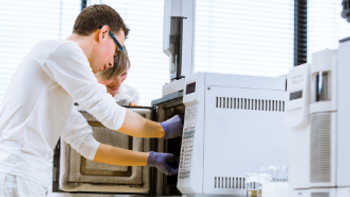
- LCGC Europe-05-01-2010
- Volume 23
- Issue 5
Green Light for Green Chromatography?
Pat Sandra and his team will discuss how green chromatography works in practice
Green chromatography has changed from a buzzword to reality. Last year, interest in green liquid chromatography increased dramatically due to the acetonitrile shortage — but more as a way to save money than the environment!
In LCGC Europe in 2010 a team from the Research Institute for Chromatography (RIC) will review green chromatography in practice in an exclusive three-part series. A major part of the discussion will focus on use of hazardous solvents in chromatography and sample preparation and describe some green alternatives. In both areas considerable progress has been made to reduce solvent use, switch to more benign solvents, and/or eliminate organic solvents.
Several of the 12 principles of green chemistry1 directly apply to analytical chemistry: (1) prevent waste, (5) use safer solvents, (6) increase energy efficiency, (8) reduce derivatives, (10) design for degradation and (11) real-time analysis for pollution prevention.
An important point when discussing green analytical chemistry — a term coined by J. Namiesnik — is its definition.2 L.H. Lawrence defined it more specifically as "the use of analytical chemistry techniques and methodologies that reduce or eliminate solvents, reagents, preservatives and other chemicals that are hazardous to human health or the environment and that may also enable faster and more energy-efficient analyses without compromising performance criteria."3 The latter prerequisite has often been the bottleneck in translating existing methods to greener methods.
The first part of the series in this month's issue will discuss reducing solvent use by miniaturization, switching to benign solvents and eliminating organic solvents in liquid chromatography. Ultra high pressure LC (UHPLC) using short narrow-bore columns packed with sub-2 μm particles is currently the most straightforward way to reduce solvent consumption. Method translation from conventional LC to UHPLC is rather simple and solvent saving can be as high as 90%. Further miniaturization to capillary or chip format resulting in μL to nL/min flow rates is another option if validation criteria can be met. Switching to more benign solvents is much more complicated — but possible.
Part 2 of the series in September will focus on gas chromatography (GC) and supercritical fluid chromatography (SFC). GC is by definition much greener than LC (although dwindling supplies of helium and its associated increasing cost should be taken into consideration) and several applications presently performed by LC, for example, PAH analysis and some pharmaceutical analyses, can be perfectly performed by GC. By far the most widely advertised "green chromatography method" is SFC due to its sparse use of solvents. Is this correct? Do we not need high concentrations of organic modifier to keep the solutes in solution? SFC will be critically evaluated in the framework of green chromatography and generic green methods will be presented.
The series will conclude in December and will concentrate on green sample pretreatment techniques, that are also often much more productive and cost-effective than classical enrichment/fractionation methods. The new methods in which miniaturization and/or solventless operation are key factors have aided in designing integrated analytical systems, providing high-throughput, unattended operation and exceptional performance.
Pat Sandra is director of the Research Institute for Chromatography (RIC), Kortrijk, Belgium, professor in Separation Science at the Ghent University, Belgium and director of the Pfizer Analytical Research Centre-UGent, Belgium.
References
1. P.T. Anastas and J.C. Warner, Green Chemistry: Theory and Practice, Oxford University Press, New York (1998)
2. J. Namiesnik. Environ. Sci. Pollut. Res., 6, 243 (1999).
Articles in this issue
over 15 years ago
Multiple Dimensions of Separations: SPME with GCxGC and GCxGC–TOF-MSover 15 years ago
Too Much Scrutinyover 15 years ago
Event Newsover 15 years ago
New Developments in the Field of Monoliths for ChromatographyNewsletter
Join the global community of analytical scientists who trust LCGC for insights on the latest techniques, trends, and expert solutions in chromatography.




